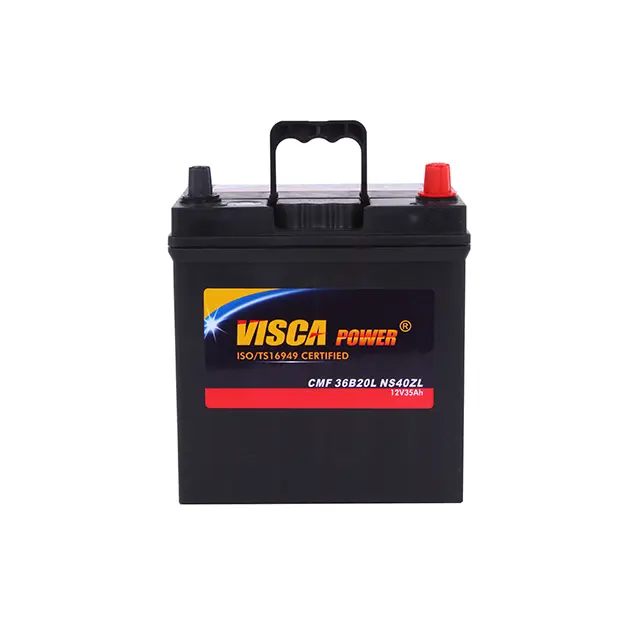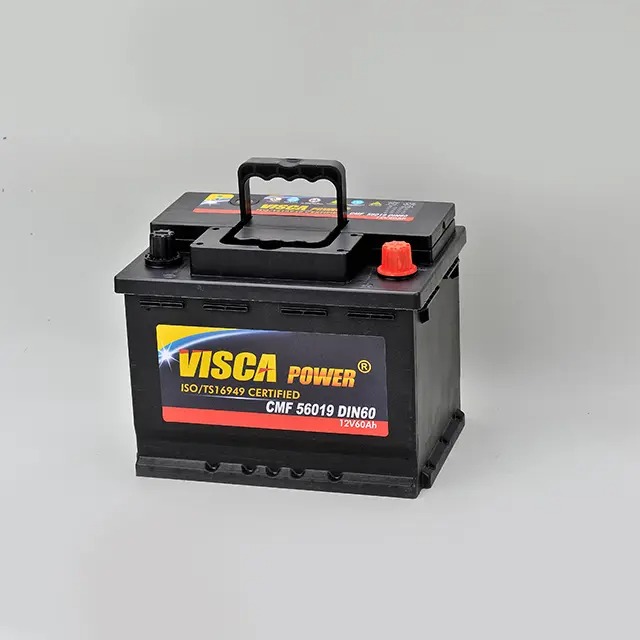Tips to Extend the Lifespan of Your Visca Power Maintenance Free Series Battery
Views: 195 Author: Site Editor Publish Time: 2025-08-31 Origin: Site
Introduction
Maintenance Free Series Batteries are designed for convenience, longevity, and efficiency, making them ideal for vehicles, RVs, and other high-demand applications. Unlike traditional lead-acid batteries, these batteries do not require regular water refills or electrolyte checks, thanks to their advanced colloid or gel technology. Their sealed design minimizes the risk of leakage and ensures stable performance under various conditions. By understanding how these batteries operate and the factors that influence their lifespan, users can implement strategies to maximize efficiency, reliability, and overall lifespan.
Maintenance-free batteries feature advanced internal designs, including corrosion-resistant plates and enhanced electrolyte suspension, which prevent stratification and sulfation. They are capable of withstanding deep discharge cycles better than conventional batteries. However, their longevity is still influenced by environmental factors, usage habits, and charging practices. Educating yourself about these aspects ensures that your investment in a Visca Power Maintenance Free Series Battery continues to deliver optimal power over years of use.
Proper Installation and Initial Setup
The first step in prolonging the life of your maintenance-free battery is ensuring proper installation. Incorrect installation can lead to premature failure or reduced efficiency. Start by verifying that your RV or vehicle supports the 12V voltage requirement and has a compatible battery compartment. Avoid connecting the battery terminals incorrectly, as reverse polarity can cause permanent damage. Always use appropriately sized connectors and ensure they are securely tightened to prevent arcing.
During the initial setup, consider charging the battery fully before first use, even if it comes pre-charged. A full initial charge ensures that all battery cells are balanced and ready for consistent performance. It’s also essential to position the battery in a stable, vibration-free location to prevent internal plate damage. Avoid areas with extreme temperatures, as excessive heat or cold can negatively impact battery efficiency and lifespan.

Optimal Charging Practices
Charging practices are critical for maintenance-free battery longevity. Overcharging can lead to excessive gassing and internal heat, damaging the battery's plates and electrolyte balance. Conversely, undercharging may cause sulfation, reducing overall capacity and lifespan. Always use a charger compatible with maintenance-free technology, ideally with a multi-stage charging profile that adjusts voltage and current based on the battery’s state.
For 12V colloid batteries, maintain charging within the recommended voltage range (typically 13.5–14.8V for bulk/absorption charging). Avoid prolonged float charging at excessive voltages, as this can stress the battery. Regularly inspect charging systems for voltage consistency, especially in RV applications where alternator output may fluctuate during extended drives. Implementing smart chargers with automatic cut-off functions helps maintain battery health and prevent overcharge or undercharge damage.
Environmental Considerations and Storage Tips
Environmental factors greatly influence maintenance-free battery lifespan. High temperatures accelerate chemical reactions inside the battery, increasing self-discharge and plate corrosion. Conversely, freezing conditions may reduce electrolyte conductivity, causing capacity loss. When not in use, store your battery in a cool, dry, and well-ventilated location, ideally between 15°C and 25°C (59°F–77°F). Avoid exposure to direct sunlight or damp conditions that can compromise the battery casing and internal components.
For long-term storage, periodically check battery voltage and perform a controlled recharge if necessary. Maintenance-free batteries are designed to self-regulate, but leaving them discharged for extended periods can lead to irreversible capacity loss. Using a battery maintainer or trickle charger ensures that the battery remains at an optimal charge level, particularly in seasonal RV storage or infrequent usage scenarios.
Routine Maintenance and Inspection
Although these batteries are marketed as maintenance-free, routine inspection remains vital. Inspect the battery terminals for corrosion, dirt, or loose connections. Even minor buildup can increase resistance and reduce performance. Clean terminals with a suitable terminal cleaner or baking soda solution, followed by applying a thin layer of dielectric grease to prevent further corrosion.
Check the battery case for any signs of bulging, cracks, or leakage. Such issues may indicate internal damage or overcharging. Additionally, monitor voltage and capacity regularly using a digital multimeter or battery tester. Identifying issues early allows for corrective action, preventing potential power loss during critical applications.
Performance Optimization for RV Applications
Visca Power Maintenance Free Series Batteries are ideal for RV setups, providing reliable energy for lights, appliances, and electronic devices. To maximize performance, balance load distribution and avoid deep discharge cycles whenever possible. Overdrawing power can shorten battery life, so implement energy-efficient devices and practices. Integrating solar chargers or auxiliary charging systems can maintain optimal charge levels during extended trips.
Consider the following table for optimal discharge and recharge practices:
| Parameter | Recommended Range | Notes |
|---|---|---|
| Discharge Depth | 30–50% | Avoid frequent deep discharges |
| Charge Voltage | 13.5–14.8V | Adjust according to charger specifications |
| Storage Temperature | 15–25°C | Prevent overheating or freezing |
| Cycle Testing | Every 3–6 months | Evaluate capacity retention |
FAQ: Maintenance Free Series Battery Usage
Q1: Can I use this battery in cold climates?
Yes, but ensure the battery is insulated from freezing temperatures and avoid deep discharges during extremely cold weather.
Q2: How often should I charge a stored battery?
Ideally, check voltage monthly and use a maintainer or controlled recharge if voltage drops below 12.4V.
Q3: Are these batteries completely maintenance-free?
While daily maintenance is not required, periodic inspection and terminal cleaning are recommended to ensure optimal performance.
Q4: What is the typical lifespan of a Visca Power Maintenance Free Series Battery?
With proper care, these batteries can last 4–6 years, depending on usage conditions and charging practices.
Conclusion
Maintenance Free Series Batteries combine advanced technology with user convenience, offering reliable performance for RVs and other demanding applications. By implementing proper installation, optimal charging, environmental care, and routine inspection, users can significantly extend battery life. These practices not only protect your investment but also ensure uninterrupted power supply for your vehicles and equipment. Understanding and applying these tips guarantees that your Visca Power Maintenance Free Series Battery remains a dependable energy source for years to come.




